 Originally published February 23, 1996, in Comics Buyer’s Guide #1162
Originally published February 23, 1996, in Comics Buyer’s Guide #1162
It seems that no matter where you go in the comics industry or what you do or what facet you work in, crossovers and tie-ins are unavoidable. In this case, the word has come down from on high that this installment of BID should tie in with the 25th anniversary of Comics Buyer’s Guide.
Hey, at least it doesn’t have a glossy cover that they’re making you pay an additional buck for.
It, uh—doesn’t have one, does it, Maggie?
In any event, I was told I should cast my roving eye back 25 years, to comment and reflect upon where I was, what I was doing, and perhaps give my view of the state of the industry at the time.
Well, actually, it was about that time that I was tapering off from comic books completely.
(I think I may have covered some of this material in a previous column but I don’t have the time or inclination to check through several hundred columns to see exactly what was said and when. So those who have better memories than I are cordially requested to be indulgent.)
I was living in Verona, NJ at the time—an armpit of a town (it may have improved somewhat since then; I have no idea)—and purchasing my comics at a news shop. (There was no genuine comic book shop in Verona. I think there might have been one in neighboring Montclair, but for all the occasion I had to buzz over to Montclair, it might as well have been on Mars.)
The shop had a bizarre habit of stamping the price on the cover, even though the price label provided by the publisher was already conspicuous.
This, combined with the fact that the comics were stuffed at odd angles into a standard-issue wire-frame rack pretty much guaranteed that no comics I purchased would be in mint condition.
I remember being frustrated by the escalating prices of comics. The concerns of the time—namely, that the escalation was from 12¢ to 15¢ to 20¢ and even 25¢—might seem quaint, considering the price tags that modern fans are faced with. At the time, though, it seemed alarming to me. I always knew when a price jump was in the offing, by the addition of two simple words: The price slug would no longer say “20¢” but would, instead, trumpet “Still only 20¢!” No, that was never a good sign.
There was also a great deal of messing around with formats. Sometimes page counts would increase to try to justify a price jump.
For a while, Marvel messed with page layouts, coming up with the inane notion of taking the lower half of the center spread and making it an ad, with the comic book story continuing across the upper half.
I can only imagine what a joy that must have been for creators at the time. How thrilling it must have been for writers to know that the midway point of their story could never be a full-page shot, or a double-page spread. How comforting for artists not to have to worry about trivialities such as storytelling freedom, because for two straight pages they were obligated to have the artwork consume exactly one-half sheet of Bristol board. No more, no less. Yes, even then, Marvel knew how to win over fans and creators alike.
Also around that time (well, actually, several years later, but hey, it’s close enough for jazz) was the famous DC Implosion. It was so named because there had been a major advertising blitz for new titles to be published, which was called the “DC Explosion.” But not too long after that, there was wholesale slicing of the line, and virtually all the new titles evaporated as quickly as they had rained down upon us. Thus did fans dub it the “DC Implosion,” a nickname that had such resonance that the word “implosion” is still tagged onto collapsing comic book lines, even though the word “explosion” never appeared in any of their literature. (Much as the word “gate” is tacked onto anything smacking of a scandal, even though it has zip to do with the Watergate hotel.)
You might think that, by this point, comics publishers would know better than to come up with some advertising gimmick that has the publisher’s name in it. Sooner or later, guaranteed, something is going to go wrong, and the name’s going to be twisted into something funnier and more memorable.
Marvel, not learning from the DC Ex/Implosion, came up with the Marvelution, which was transformed into the Marvelcution after the company was, basically, defenestrated.
But I digress…
It was 25 years ago—give or take—that I withdrew from comics altogether. Oh, sure, the rising prices, the fluctuating formats, the dropping in of reprint stories so an issue wouldn’t miss shipping: all of that was a contributing factor. But there was one superseding reason that I walked away, cold turkey, from my four-color friends. It was, of course, that same reason that continues to undercut most attempts by comics publishers to hold on to their readership.
I am, of course, referring to… girls.
Somehow, the babes in skintight outfits (who would probably have had heart palpitations, if they had gotten a load of the “Bad Girls” of comics nowadays), as robust as they were, as supple and sleek as they were—somehow they simply didn’t compare to my female classmates. Sure, they didn’t have the accoutrements or endowments—but they were real. They were there.
And they couldn’t see me for dust.
This was during my infamous guitar period, when I bought a relatively inexpensive guitar and started taking lessons, bent on becoming a folk singer so that the girls would crowd around me and listen to me croon tunes. I took to wearing it slung over my shoulder, the guitar strap across my manly chest, laboring under the demented illusion that I looked cool. God only knows what I was thinking. Actually, I guess I wasn’t, what with my raging hormones venting their frustration by eating away at my frontal lobe.
Unaware that I was already making an idiot of myself with that dámņëd guitar hanging around me like an albatross, I was far more concerned with what had become, to me, a truly burdensome secret. Reading comics was, as far as I was concerned, grotesquely uncool. I already had enough problems with lack of popularity. I was certain that, should my dirty little secret come out, that would be the final nail.
Now, in point of fact, I have no idea if this would have been the case. As it was, I had no friends. Who knows? Perhaps other people who also read comics would have sought me out, saying, “Hey, I heard you read comics. Me too. Which titles?”
Or, for all I know (and probably more likely), nobody would have really cared one way or the other.
But I had convinced myself, magnified my hobby out of all proportion. Comics, I was certain, were the province of illiterates, bøøbš, morons, and—worst of all—children. There’s nothing a teenager who wants to be taken seriously will be more leery of than something that can get him labeled as being some sort of immature kid.
And as it was, I couldn’t get a date. Not for love or money. (Well, maybe money—but it would have taken a lot.) I mean, I flat-out could not get a girl to go out with me. Not to dances. Not to a movie. The closest I came was when I took Elise Baker (a year or two younger than I) to see Yellow Submarine. Wow, that was a hot date. I especially liked the way she brought her kid sister along.
It’s no surprise. I mean, hëll, I worked AV Squad and in the school library. And I schlepped a guitar on which I could play “Merrily We Roll Along,” as long as I didn’t mind slicing my fingers to ribbons on the strings. In a jock town that worshipped the football team, I wasn’t exactly someone any girl really wanted to be seen with. Not if she had any hope of dating a football player or someone worthwhile.
Rather than risk being caught buying comic books—rather than risk losing all hope of eventually being taken seriously by anyone (as if I could be)—I gave them up. Went cold turkey, just like that.
Still didn’t get any dates. But at least I had hope.
I remember right when it was, too. It was an issue or two before Gwen Stacy was knocked off by the Green Goblin.
I know this because, several years later, I was at a gathering of Star Trek fans. By this point my family had moved to Pennsylvania (and graciously agreed to take me with them). My life had improved somewhat, which was a relief, because if it had gotten much worse I’d probably have had to be institutionalized. And I ran into a guy named Neil Harris at that gathering—which was a picnic being held by a Trek club called “Space-Time Continuum”—and Neil had continued to read comic books all through the time that I had given them up. So I asked him about the one dangling thread that I’d wondered about. I said, “So did Peter Parker ever marry Gwen?”
“Gwen’s dead,” he said.
I was stunned. Gwen had been my idealized version of everything a girlfriend should be. Gorgeous. Sweet. Gorgeous. Blonde. Gorgeous. Drawn by John Romita. (Although Gil Kane’s rendering of her running around in a bikini for an otherwise stupid King Kong rip-off issue wasn’t half bad.)
“You’re kidding,” I said.
“No, really. She was pushed off a bridge by the Green Goblin.”
This well and truly angered me. And I swore two things: one, that I would never get back into comics; and two, that, if I ever did become a fiction writer (a pipe dream I sometimes indulged in), I would never, ever, ever kill a character. How, after all, could I put readers through such agony?
Two promises which I eventually broke.
Although I did eventually get a date.
Both of which would have been unthinkable to me 25 years ago.
(Peter David, writer of stuff, can be written to at Second Age, Inc., PO Box 239, Bayport, NY 11705.)
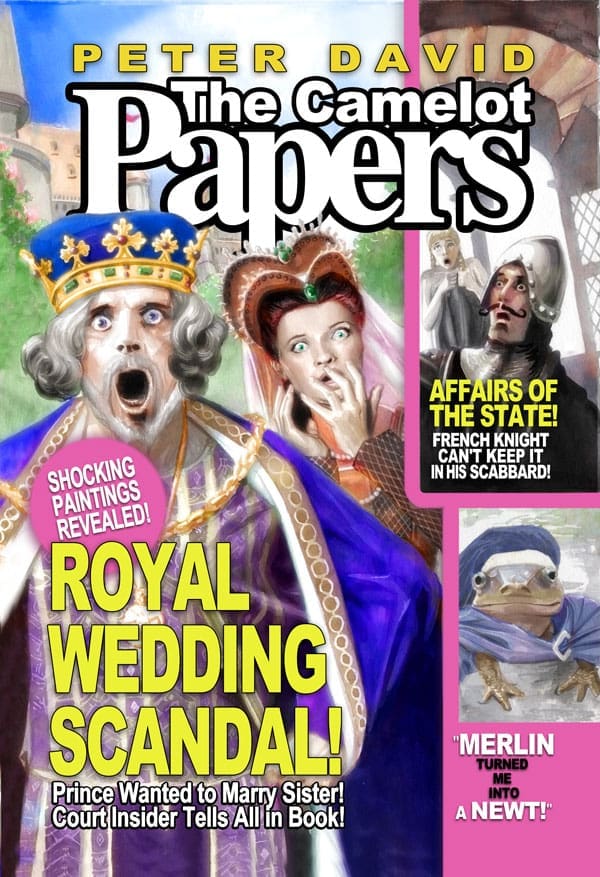
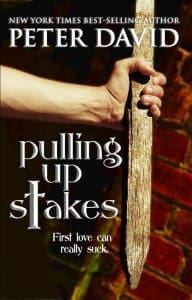
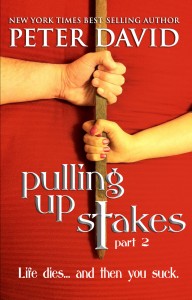
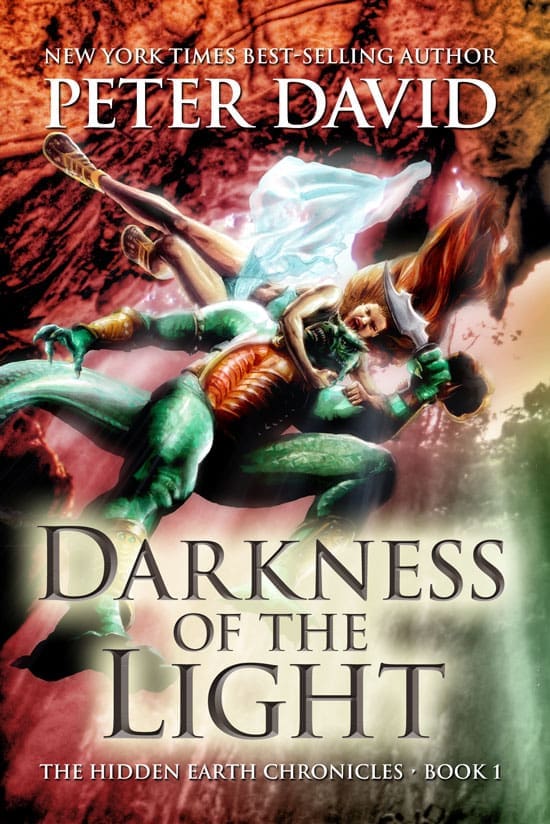
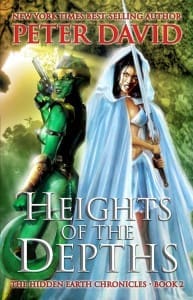
I know the timeline’s all wrong, but I’m nonetheless imagining Neil Patrick Harris being the guy who told you Gwen was dead.
…as Barney Stinson.
.
“No, man. Gwen’s dead. And Norman Osborn banged her, too. True story.”
.
Oh, if only that latter part were a Barney-style embellishment. Did the deal with the devil wipe that out, too? Please?
.
–Daryl
Y’know, the whole “gave up comics because they discovered girls” thing always puzzled me. Probably because it never happened to me. I mean, sure, girls are great. It just never seemed like anything that would occupy a person’s time so much that it could derail a hobby so completely. Maybe I just wasn’t hormonal enough in my youth to get it.
.
It’s not the amount of time it took, it’s just that it was comic books. “Cool kids” didn’t read comic books and girls didn’t date kids who read comic books.
.
At least that’s what everyone else says they experienced.
.
I guess I got lucky. My high school had a lot of military brats in it. Many of the kids (including the girls,) while American born, spent most of their lives in countries that didn’t stigmatize comics the way American culture did. We also had quite a few Japanese kids in the mix as well. Not only did this mean there was a good chunk of kids who didn’t automatically look down on comics in high school, but there were actually a good chunk of comic geek girls. As a result, I didn’t have that issue during that time period; especially given that I was huge into things like Sandman and some of the other Vertigo books at the time as well as a manga geek.
.
So, no, it wasn’t the deal breaker in my high school years that it seemed to have been for others.
Ah, I see. I think I gave up on the idea of being “cool” shortly after fourth grade when the guys who used to be my friends turned into complete jerks.
I know it seems kind of early to have given up, but social things have always come harder for me than they have for many others.
I wonder what nickname the DCNewU will get (if/when) it fails. The DCNewPoo? (yes, I’m childish)
Maybe DC 86’d.
.
PAD
Doesn’t seem like much of a failure. For September, DC kicked the crap out of Marvel to an extent I can not remember in my lifetime. 52 of the top 86 books, 1 over 250,000 copies sold, three over 200,000 and 11 over 100,000. And what I’m getting from retailers is these aren’t speculators but a lot of new customers, who aren’t even dropping marvel as much as giving DC books a shot f0r the first time in years.
.
People are buying these books to read and for the most part reaction has been very positive.
The numbers are meaningless. They’re simply an indicator of what retailers are ordering; not what fans are buying. Let’s see where things stand six months to a year from now.
.
PAD
While the rankings may be a bit inflated, the truth is if the initial issues had tanked or all fallen below expectations, like so many other high;y hyped DC projects in the past decade or so, many – including myself – would have called DC’s gamble a big failure caused by relying on “short-term gimmicks” of new #1s, renumbering books with historic runs like “Detective” and “Action”, making them available the same day online, etc.
.
Plus many of these books already have multiple printings. And in an industry in which sales have been slowly declining and there was not even one title cracking the 100,000 copy threshold in many recent months, to have 11 titles from one company breaking that threshold including “Aquaman” and books people were yelling at the top of their lungs was a mistake – like the now-walking Barbara Gordon in “Batgirl” – well, I don’t remember those type of numbers for when Geoff Johns launched “Hawkman” a few years ago or any issue of “Birds of Prey” coming close to those numbers.
.
Time will tell as always. But in an industry that many saw as being in irreversible decline, will gladly take them – along with near-unanimous reports from retailers I talked to of new readers and positive buzz from the new books in general – as a welcome, surprising bit of good news.
I discovered girls who read comics like I did, so win-win there! 🙂
Didn’t exist in Verona. Simply did not exist. People didn’t read much of anything there, much less comics. There was a single bookstore and I was the only customer ever in it. One week my folks were upset with me and they docked me my allowance; the following week the bookstore went out of business. True story.
.
PAD
Geez. What about a library? Was there even a library?
I gave up comics at around the same age for exactly the same reason – I was terrified that I would be branded as being “childish”, and I wanted to look cool for the girls. Much like PAD, at this late date I realize how foolish that was, but adolescent minds simply don’t operate along rational lines – especially those that are desperate to “be cool” and attract girls (which I struggled with as well).
The real unfortunate thing about that is that, as a result, I missed most of PAD’s legendary output at Marvel and DC in the late 80’s and early 90’s. Also missed out on DKR and Watchmen. It’s nice at this late date to be able to go back and leisurely catch up, experiencing the thrill of reading these classics for the first time years after most comics fans have, but I missed out on the buzz and excitement of when those titles were “hot”.
They were also priced a little cheaper back then as well.
Always late for the party . . .